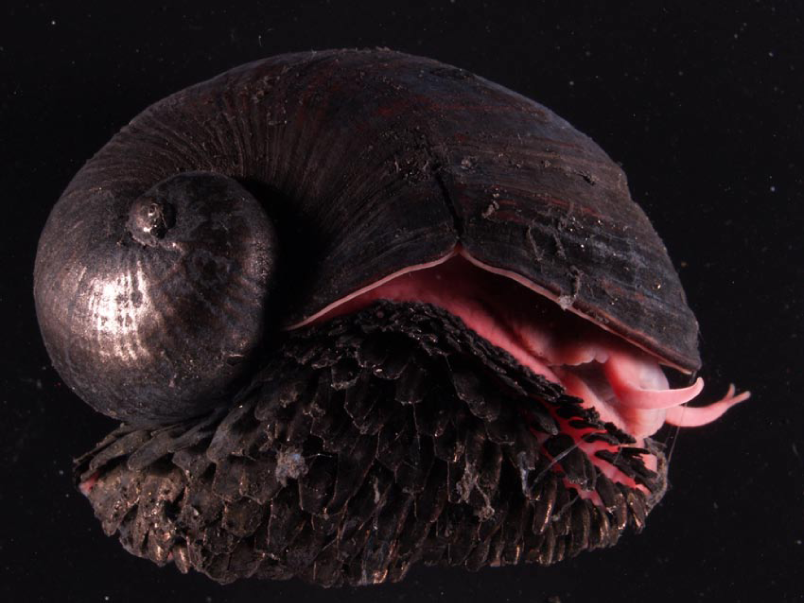The volcano snail may sound (and look) like something from a fantasy novel, but it is a real creature that has adapted to live in the inhospitable would at the bottom of the ocean.
What is the volcano snail?
Volcano snail is one of the common names for Chrysomallon squamiferum, a species of deep-sea gastropod mollusk. The snail was first discovered in 2001 and was then referred to as the scaly-foot gastropod, receiving its formal scientific name in 2015. It is also sometimes referred to as the scaly-foot snail or sea pangolin.
All these names come from the fact that the volcano snail is equipped with what looks like scale-mail that covers its foot. These dermal scales have evolved to protect it from the deadly environment it lives in.
Where do volcano snails live?
Volcano snails are extremely rare. They are a species of vent-endemic gastropods that live among the deep-sea hydrothermal vents at the bottom of the Indian ocean. At present, these snails are most prominently found in the Kairei hydrothermal vent field, followed by the Solitaire field, along the Central Indian Ridge.
In 2011, an expedition also found a previously unknown population of volcano snails living around the Longqi vent field, along the Southwest Indian Ridge.
Why are volcano snail shells special?
As with much of nature, the appearance of the volcano snail, with its large dark shell and armored foot, is a product of its environment. The hydrothermal vents themselves are located around 2.4 kilometers (1.5 miles) down, while the waters that issue from them can reach temperatures of over 371°C (700°F). As such, this critter needs a way to survive in these inhospitable waters, and its shell and scales are just that.
The volcano snail’s shell is made up of three layers of varying levels of durability. The outer part is a harder armor-like structure made from iron sulfide. It encases a softer layer of organic periostracum, which tends to form the outer coating of other shelled mollusks. Finally, the third layer is a calcified material known as aragonite.
The snail’s scales are also part of its defenses, but not in the way you would think. They are not intended to protect the fleshy soft parts of the mollusk from predators, but rather to save them from themselves, as it were. Volcano snails don’t hunt for food per se; they create their own food from bacteria that grows inside a special pouch in their throats. These bacteria convert chemicals from the hydrothermal vents into energy (probably in the form of sugar) and feed the snail everything it needs through a process known as chemosynthesis.
However, the bacteria produce large amounts of sulfur as a byproduct of this symbiotic relationship, which is toxic to the snail. The snail has therefore developed its scales, which have a structure that draws the sulfur away from its body and leaves it as an iron compound on its outside.
The volcano snail has specially developed scales (called sclerites) that helps protect it from the toxins produced by the friendly bacteria that live in its throat.
Are volcano snails endangered?
Volcano snails are hardy little specimens if ever there were any. But while they may have evolved and adapted to survive in such harsh environments, they have not developed to survive human activity. It turns out that the hydrothermal vents they live around are also hot-spots for deep-sea mining. In particular, these vents are exploited for the polymetallic sulfide minerals that accumulate around them.
In 2019, the International Union for the Conservation of Nature (IUCN) placed the volcano snail on its list of endangered species. Although they are still prevalent in the Longqi vent field, their numbers have dropped significantly around the other vent fields.
Source Link: Volcano Snail: The Armored Snail From The Bottom Of The Ocean
